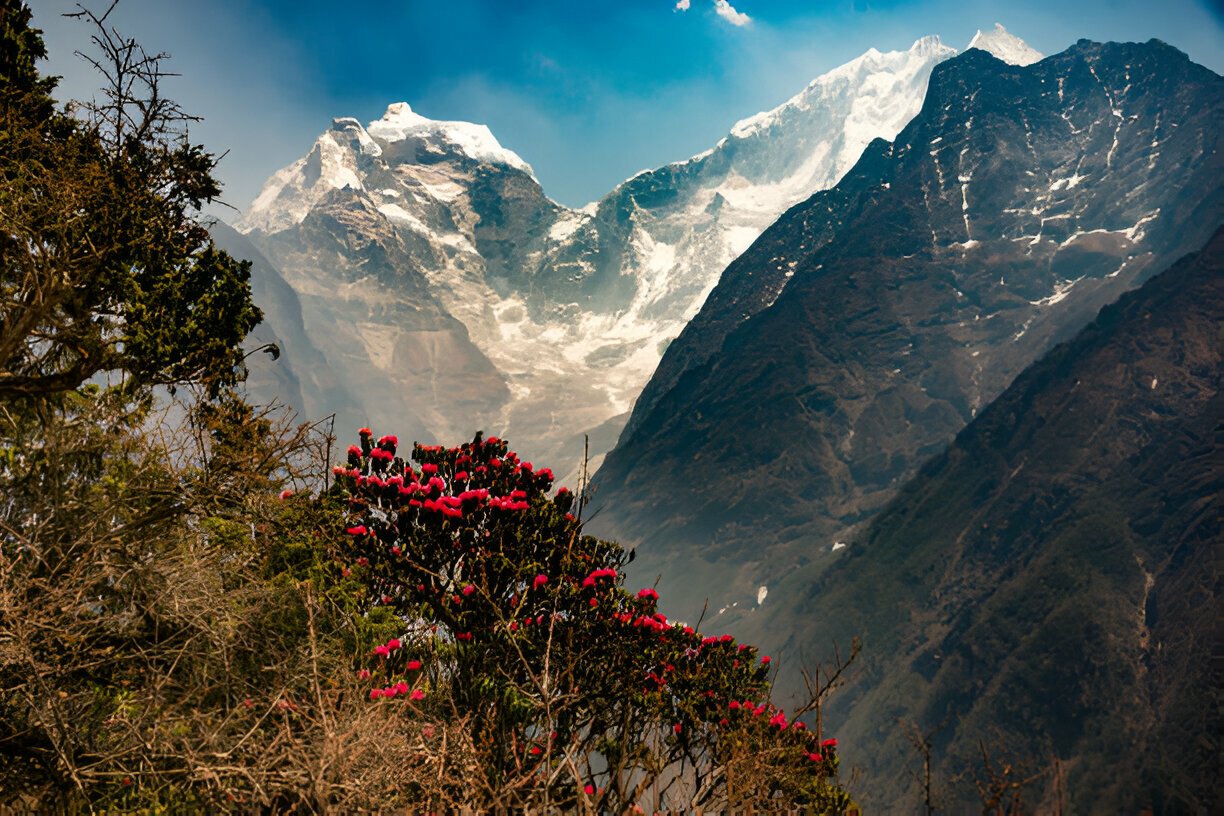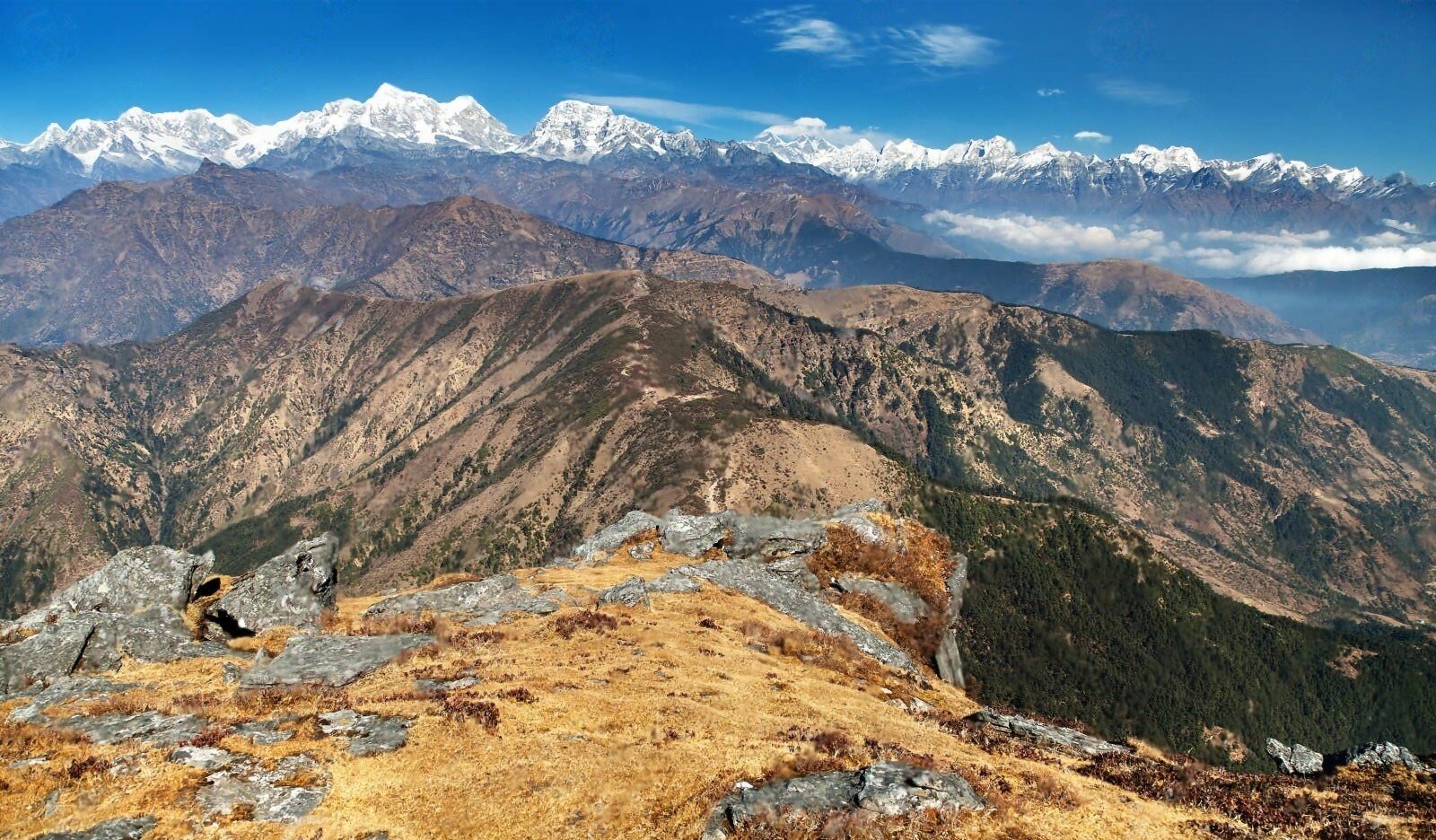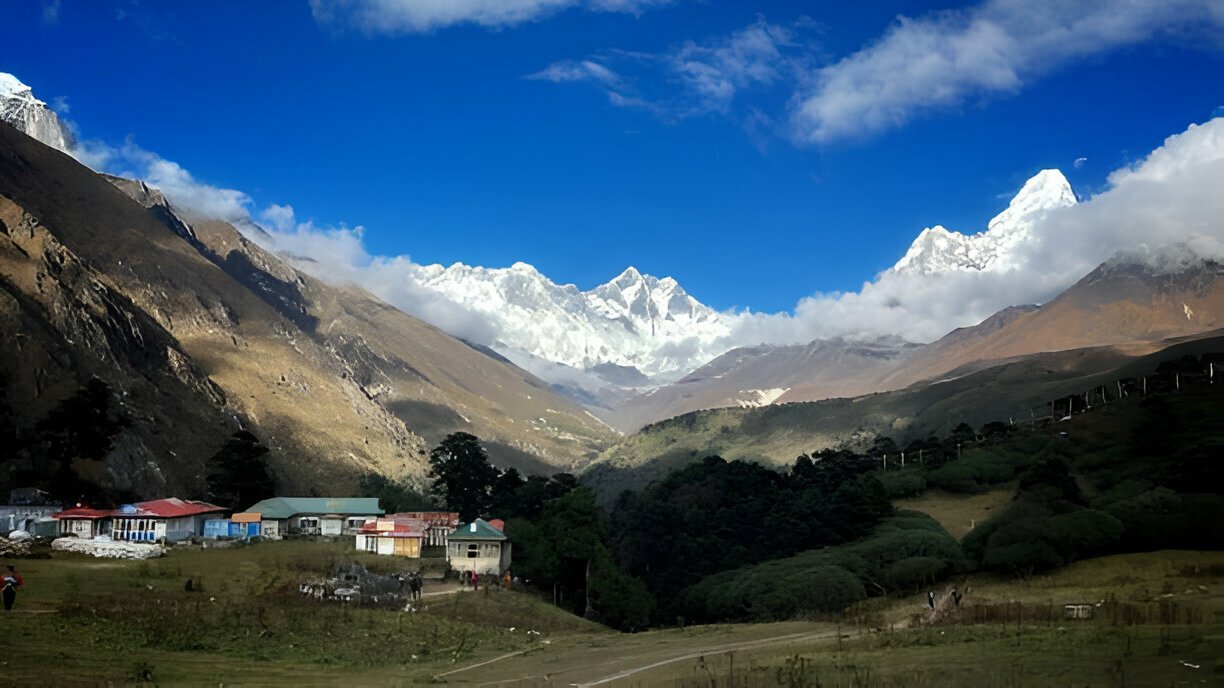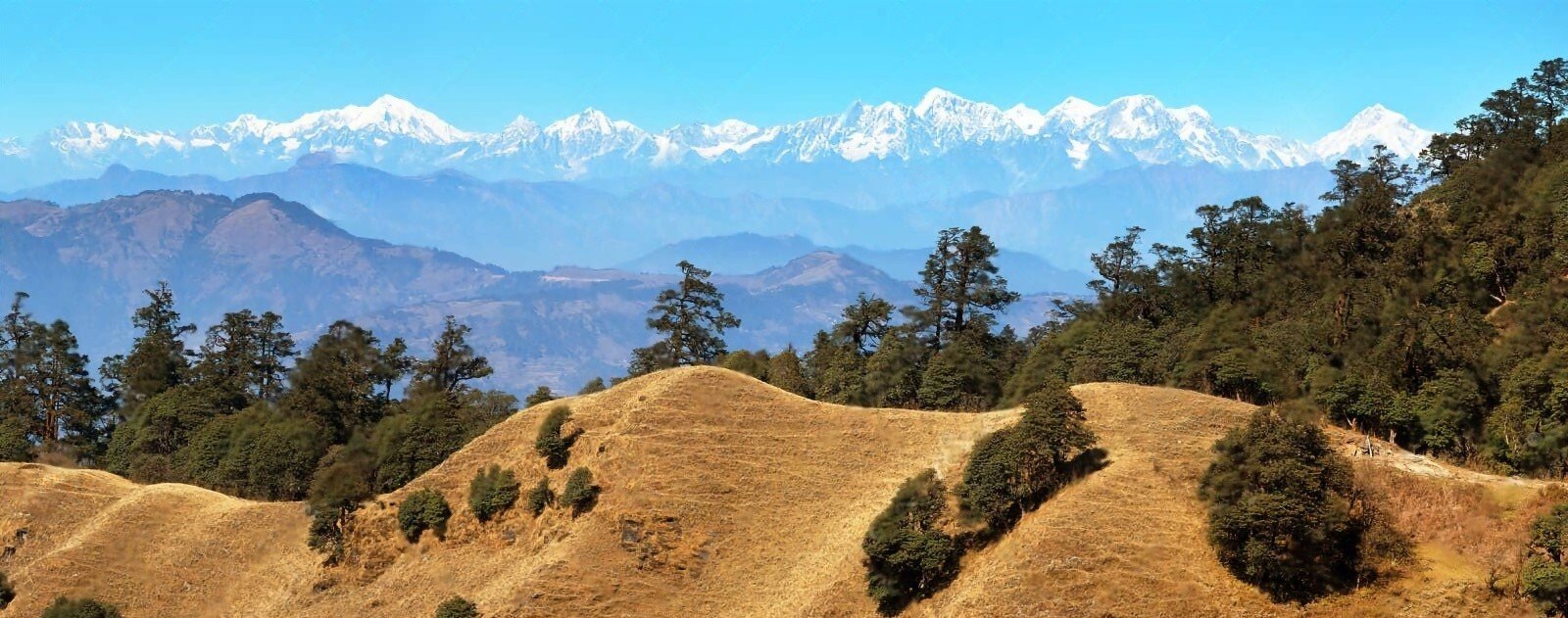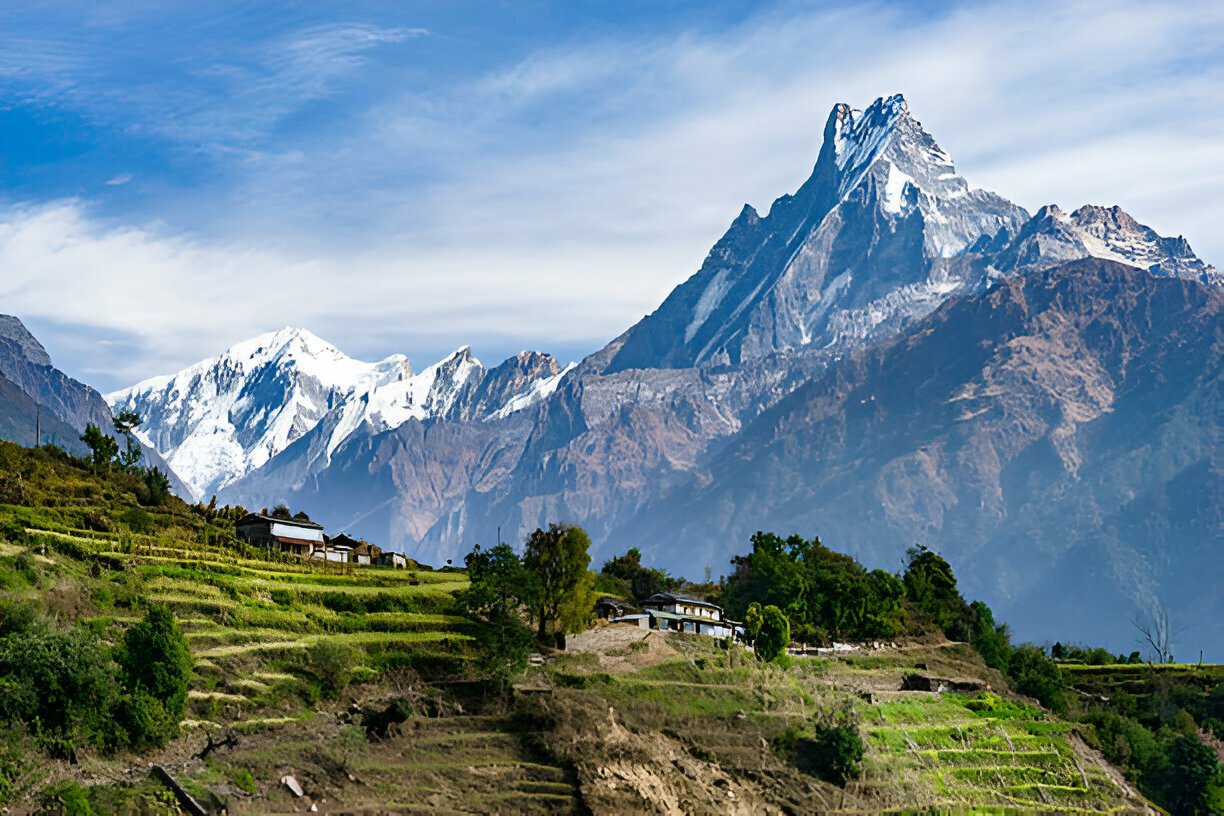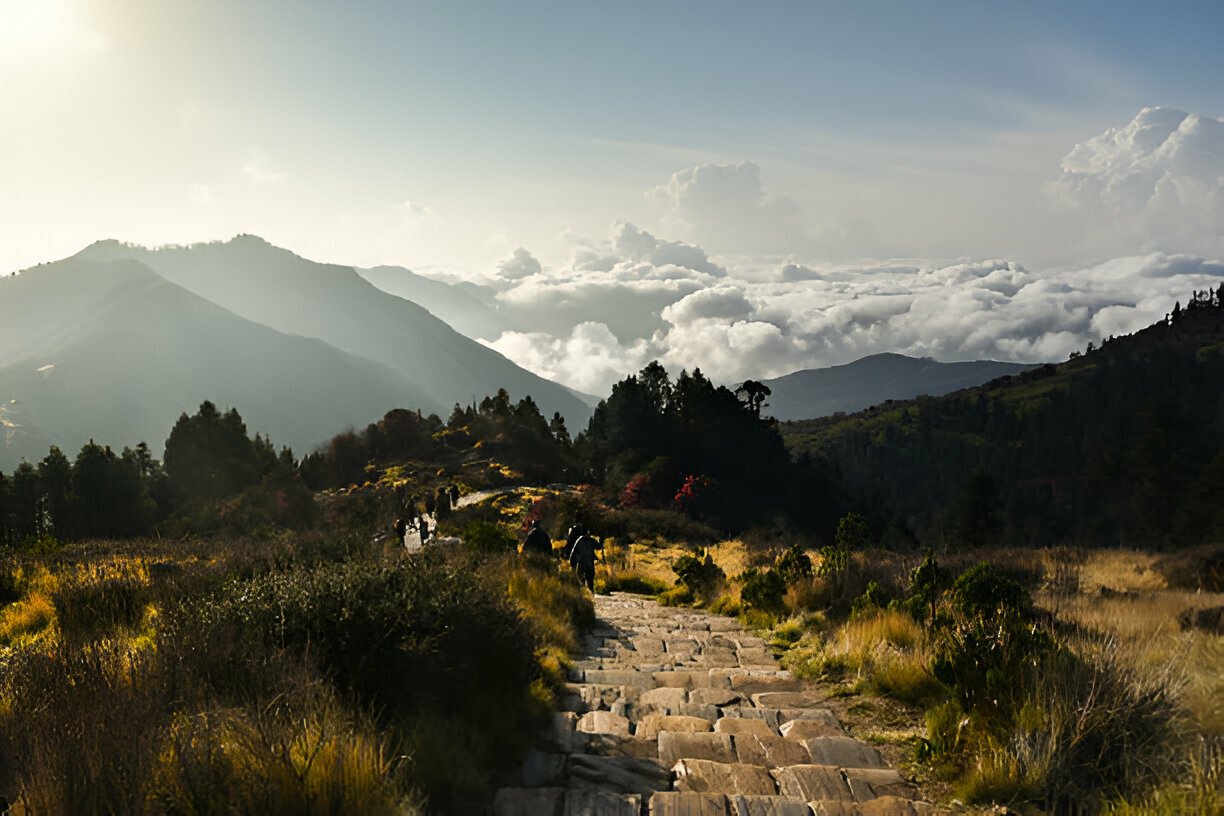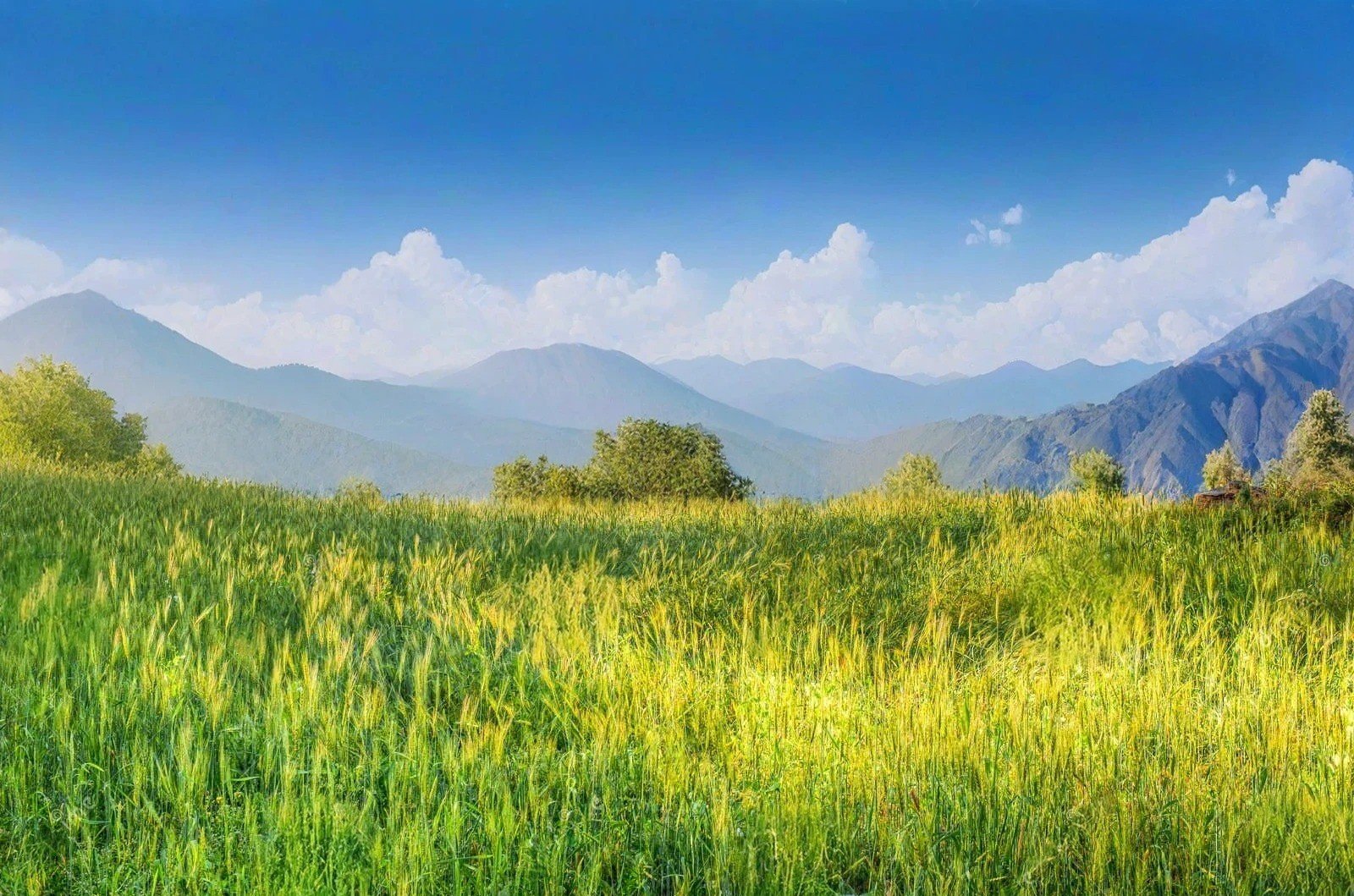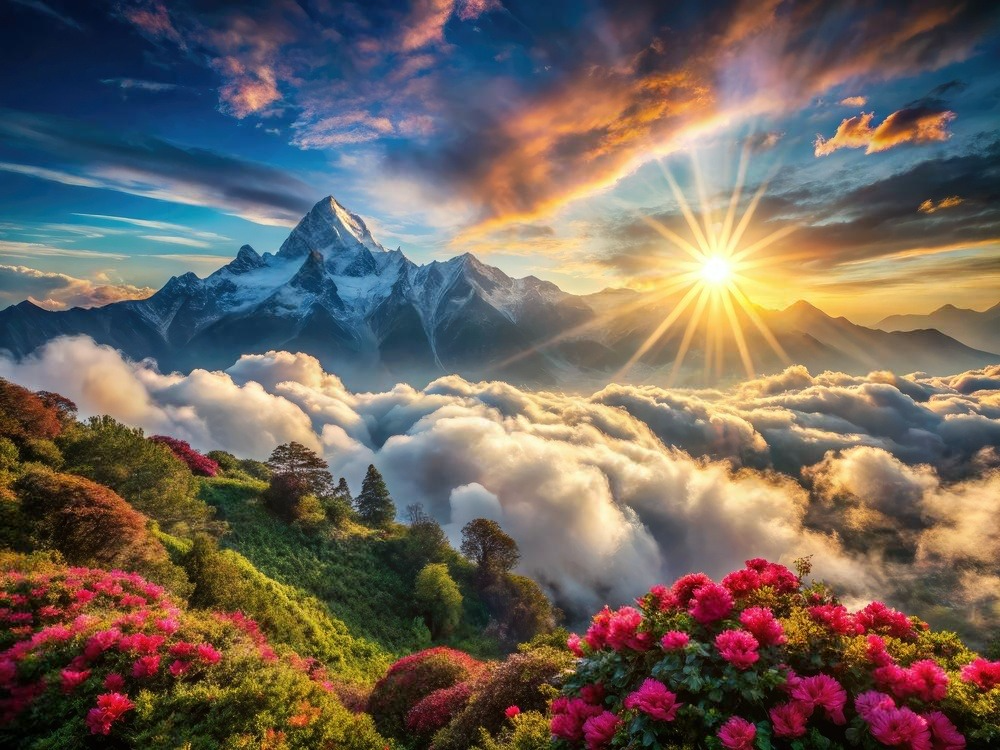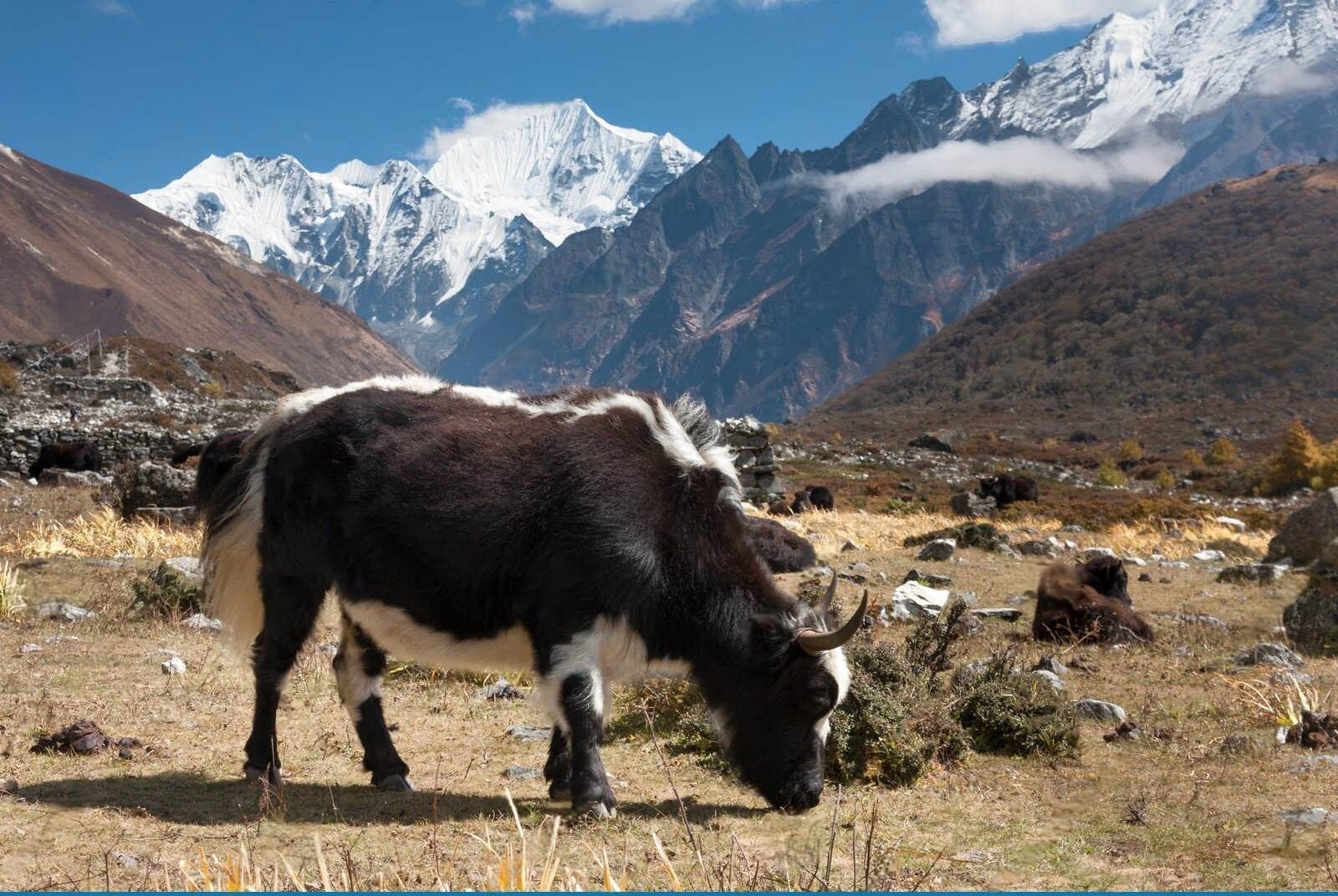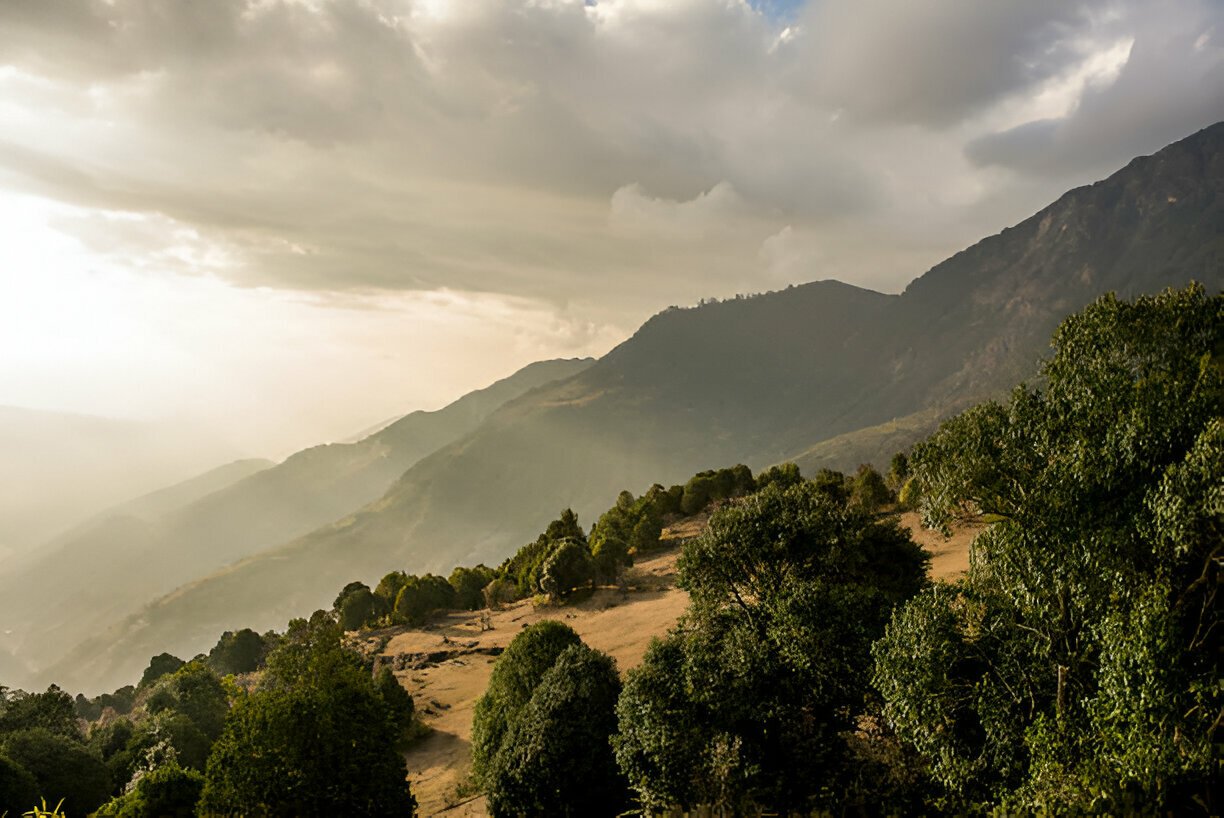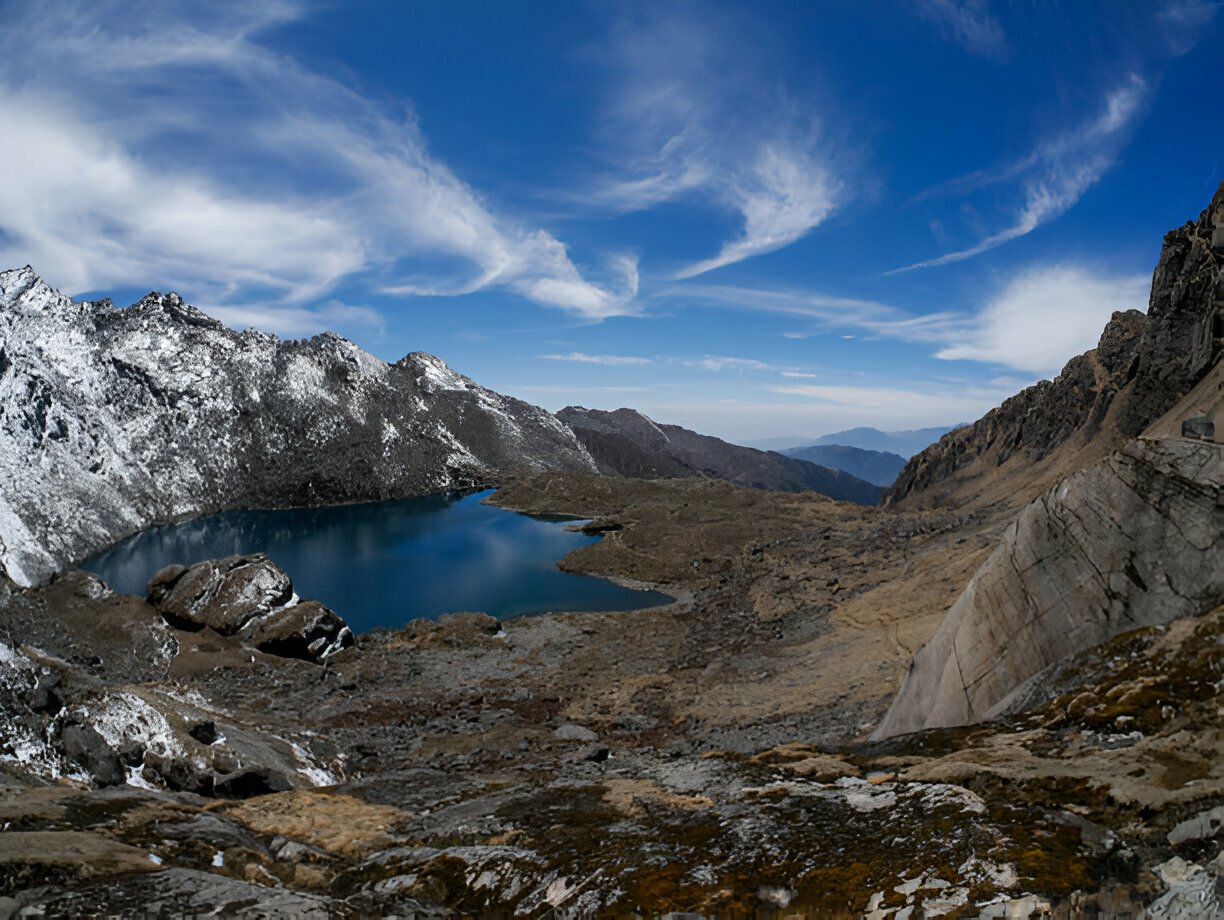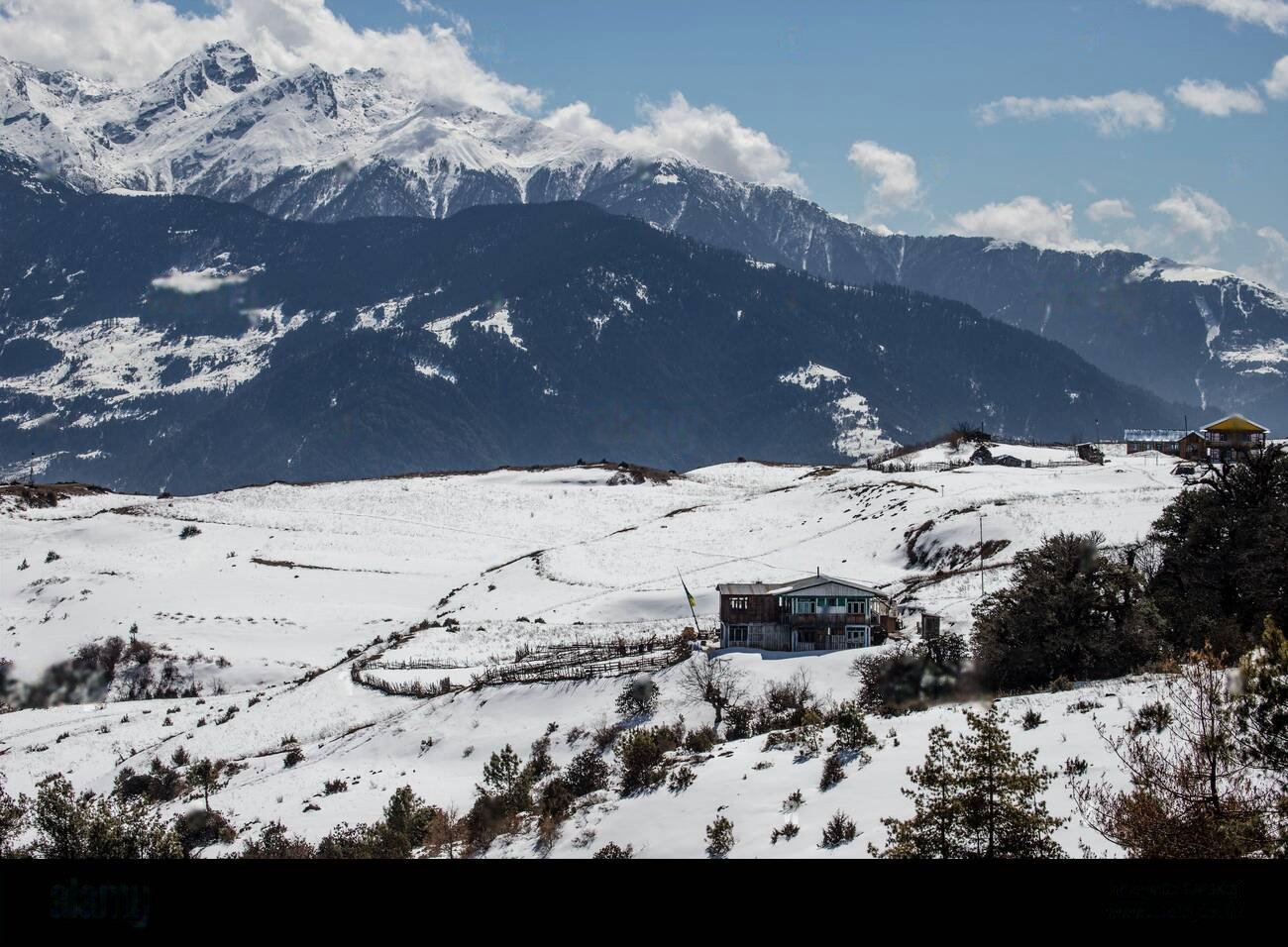 Detailed Information
Detailed Information
Pathibhara Temple offers a profound spiritual journey that seamlessly blends religious devotion with wilderness adventure, creating an experience that speaks to both the soul and the senses. What distinguishes this sacred site is its extraordinary isolation and the effort required to reach it elements that amplify the spiritual significance for those who make the pilgrimage and create an atmosphere of authentic devotion rarely found at more accessible religious sites.
As you begin the ascent from Suketar or Phungling, the bustling world gradually falls away. The trail winds through terraced fields and traditional Limbu villages before entering dense forests of oak, pine, and magnificent rhododendrons that burst into brilliant red and pink blooms during spring. This transitional journey creates a natural cleansing of the mind, preparing pilgrims for the sacred encounter ahead. Many devotees observe silence during portions of the trek, treating each step as a form of moving meditation that heightens their spiritual receptivity.
The final approach to the temple, often veiled in swirling mountain mists that part momentarily to reveal glimpses of the shrine, creates a profound sense of entering a realm between earth and sky. This liminal quality is central to the Pathibhara experience—the physical position at high altitude serving as a metaphor for spiritual elevation and proximity to divine forces. Many pilgrims report feeling a palpable energy shift as they enter the temple grounds, where prayer flags snap in the wind and incense smoke curls toward the heavens.
The cultural tapestry surrounding Pathibhara is rich and complex, reflecting the unique heritage of Eastern Nepal. The shrine holds particular significance for the indigenous Limbu people, whose shamanic traditions and nature worship have blended harmoniously with Hindu practices over centuries. The Limbu priests (bijuwas) who serve alongside Hindu priests represent this cultural synthesis, performing rituals that honor both traditions. This religious syncretism creates a uniquely inclusive atmosphere where devotees from various backgrounds feel welcomed.
Throughout the day, the atmosphere around Pathibhara shifts dramatically with changing mountain weather. Early morning often brings clear skies and transcendent views of Kanchenjunga and other Himalayan peaks, creating moments of awe and natural reverence. By midday, the temple courtyard fills with pilgrims performing rituals, while afternoons frequently bring swirling mists that shroud the temple in mystery. Weather on the mountain can change rapidly, and many devotees see these transformations as manifestations of the goddess's mood and power. This dynamic environment reinforces the feeling that Pathibhara exists in a realm where natural forces and divine presence intertwine.
Pathibhara Temple offers a profound spiritual journey that seamlessly blends religious devotion with wilderness adventure, creating an experience that speaks to both the soul and the senses. What distinguishes this sacred site is its extraordinary isolation and the effort required to reach it elements that amplify the spiritual significance for those who make the pilgrimage and create an atmosphere of authentic devotion rarely found at more accessible religious sites.
As you begin the ascent from Suketar or Phungling, the bustling world gradually falls away. The trail winds through terraced fields and traditional Limbu villages before entering dense forests of oak, pine, and magnificent rhododendrons that burst into brilliant red and pink blooms during spring. This transitional journey creates a natural cleansing of the mind, preparing pilgrims for the sacred encounter ahead. Many devotees observe silence during portions of the trek, treating each step as a form of moving meditation that heightens their spiritual receptivity.
The final approach to the temple, often veiled in swirling mountain mists that part momentarily to reveal glimpses of the shrine, creates a profound sense of entering a realm between earth and sky. This liminal quality is central to the Pathibhara experience—the physical position at high altitude serving as a metaphor for spiritual elevation and proximity to divine forces. Many pilgrims report feeling a palpable energy shift as they enter the temple grounds, where prayer flags snap in the wind and incense smoke curls toward the heavens.
The cultural tapestry surrounding Pathibhara is rich and complex, reflecting the unique heritage of Eastern Nepal. The shrine holds particular significance for the indigenous Limbu people, whose shamanic traditions and nature worship have blended harmoniously with Hindu practices over centuries. The Limbu priests (bijuwas) who serve alongside Hindu priests represent this cultural synthesis, performing rituals that honor both traditions. This religious syncretism creates a uniquely inclusive atmosphere where devotees from various backgrounds feel welcomed.
Throughout the day, the atmosphere around Pathibhara shifts dramatically with changing mountain weather. Early morning often brings clear skies and transcendent views of Kanchenjunga and other Himalayan peaks, creating moments of awe and natural reverence. By midday, the temple courtyard fills with pilgrims performing rituals, while afternoons frequently bring swirling mists that shroud the temple in mystery. Weather on the mountain can change rapidly, and many devotees see these transformations as manifestations of the goddess's mood and power. This dynamic environment reinforces the feeling that Pathibhara exists in a realm where natural forces and divine presence intertwine.

From $0
Price Varies from Group Size
Success
Here goes about why the success toast occurred.
 Activity Outline
Activity Outline
Departure from Suketar or Phungling
Trek through Cultural Landscapes
Forest Trail and Wilderness Experience
Mountain Lunch with a View
Ascent to Overnight Stop
Evening at Teahouse or Camp
Pre-Dawn Ascent
Sunrise at Pathibhara
Temple Rituals and Worship
Circumambulation and Sacred Geography
Mountain Viewpoint Meditation
Final Offerings and Departure
Descent Journey
 Good to Know
Good to Know
The indigenous Limbu people consider Pathibhara their ancestral deity, and their ancient nature-worship traditions have blended with Hindu practices at this sacred site, creating unique rituals that honor both traditions simultaneously.
Cultural Highlights
Limbu Heritage: Deep connection to indigenous Limbu traditions and shamanic practices
Sacrificial Traditions: One of the few major temples where animal sacrifice remains an important ritual element
Festival Celebrations: Baisakh Purnima (April-May) and Dashain (September-October) bring thousands of devotees
Cultural Crossroads: Meeting point for Limbu, Rai, Hindu, and Buddhist devotees who share the sacred space
Nature Connection: Represents the Eastern Himalayan tradition of nature worship integrated with formal religion
Visitor Etiquette
Dress modestly and warmly (temperatures can drop suddenly at this elevation)
Remove shoes before entering the inner temple area
Maintain quiet and respectful demeanor, particularly during rituals
Ask permission before photographing people engaged in worship
If uncomfortable with animal sacrifice, visit during afternoon hours when these rituals are less common
Carry out all non-biodegradable waste from this pristine environment
Follow traditional clockwise circumambulation of sacred structures
Nearby Attractions
Kanchenjunga Conservation Area: Protected wilderness with exceptional biodiversity (surrounding area)
Timbung Pokhari: Sacred high-altitude lake with religious significance (one-day trek from Pathibhara)
Limbu Cultural Museum: Exhibition of indigenous Limbu heritage in Phungling (on return journey)
Taplejung Bazaar: Traditional market town with ethnic crafts and local products (district headquarters)
Kanchenjunga Base Camp: Extended trekking opportunity for adventurous visitors (5-7 day trek)
 Reviews
Reviews
 FAQs (Frequently Asked Questions)
FAQs (Frequently Asked Questions)
Your queries are answered.
Is there an easier way to reach Pathibhara?
Helicopter services operate from Suketar Airport to a landing site near the temple, reducing the journey to approximately 15 minutes. This option is popular during peak pilgrimage seasons and for those with limited mobility or time. However, many religious leaders suggest that the physical journey on foot is an integral part of the spiritual experience and pilgrimage tradition.
What is the best time of year to visit Pathibhara?
March to May offers rhododendron blooms and clear pre-monsoon skies, while October to November provides the clearest mountain views after the monsoon has cleared the air. December to February can offer spectacular clear days but may have snow on the trail and very cold temperatures. The monsoon season (June-September) is generally not recommended due to leeches, slippery trails, and limited visibility.
What accommodation options exist along the pilgrimage route?
Basic teahouses and lodges operate at traditional stopping points like Lali Kharka and Phedi, offering simple meals and shared sleeping quarters. These facilities are rustic but clean, with minimal amenities. During peak pilgrimage times, advance booking is recommended. Some tour operators offer tented camping with greater comfort. There are no accommodation facilities at the temple itself.
What offerings are appropriate to bring for the goddess?
Traditional offerings include red cloth, vermilion powder (sindoor), flowers, incense, fruits, sweets, and coconuts. Those making specific wishes often bring copper or silver vessels, bangles, or miniature representations of their wishes (such as small cradles for those seeking children). The goddess is also traditionally offered locally produced alcohol, particularly by indigenous devotees.
What is the significance of the animal sacrifices at Pathibhara?
Animal sacrifice, particularly of goats and roosters, is an ancient tradition at Pathibhara Temple, especially important to the indigenous communities who believe the goddess demands blood offerings in exchange for significant blessings. While this practice may be challenging for some visitors to witness, it represents a living spiritual tradition central to local belief systems. The practice is typically concentrated in the morning hours and during major festivals.
Are there any restrictions for women visiting the temple?
Unlike some Hindu temples, Pathibhara welcomes women at all times, including during menstruation. In fact, the goddess is particularly associated with women's concerns, including fertility, safe childbirth, and family protection. Female pilgrims often report feeling a special connection to this manifestation of divine feminine energy.
How does the indigenous Limbu belief system integrate with Hindu worship at Pathibhara?
The Limbu people, who call their ancestral territory Limbuwan, have worshipped nature deities at high mountain sites for centuries. As Hindu influence spread through the region, these indigenous practices merged with Hindu goddess worship, creating the unique spiritual synthesis seen at Pathibhara today. Limbu shamans (bijuwas) often perform their traditional rituals alongside Hindu priests, and many devotees participate in both religious traditions simultaneously, seeing no contradiction between them.




